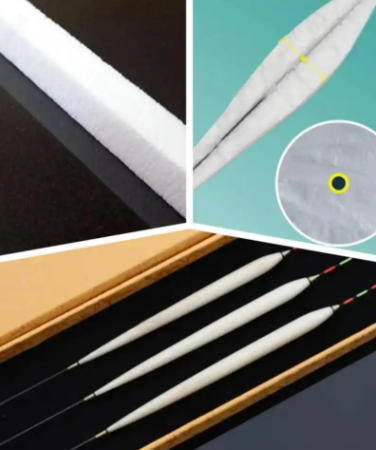
The Power of PMI Foam in Fishing Floats
Anglers are always on the lookout for an edge, a material or a technique that can make the difference between a successful day and a frustrating one. While countless components contribute to a great fishing trip, the humble float (or bobber) plays a crucial, often underestimated, role. For years, traditional materials like balsa wood and plastics have dominated the market, but a new contender is rapidly gaining popularity among serious anglers: PMI foam. This high-performance material is transforming the design and function of fishing floats, offering a new level of precision and durability.

PMI, or Polymethylacrylimide, is a rigid structural foam known for its exceptional properties. It's not a new material; it's been used for decades in demanding applications like aerospace, medical technology, and high-end sporting equipment. The reason for its widespread use in these fields is simple: it combines incredible strength-to-weight ratio with a closed-cell structure that makes it impervious to water absorption. When applied to fishing floats, these characteristics translate into significant performance advantages.
One of the most critical factors for a fishing float is its buoyancy and sensitivity. A float needs to be sensitive enough to register the slightest nibble while also being strong enough to support the bait. PMI foam excels here. Its lightweight nature means that a float made from PMI can be designed with a very low mass, allowing it to respond instantly to a fish's pull. The consistent, closed-cell structure of PMI foam also ensures uniform buoyancy. Unlike natural materials like balsa wood, which can have variations in density, PMI foam provides a predictable and stable performance every time. This consistency allows anglers to fine-tune their rigs with greater confidence.
Durability is another major selling point. Balsa wood floats, while sensitive, are notorious for their fragility. They can easily get dented, cracked, or waterlogged after repeated use. Plastic floats are more durable but often lack the sensitivity of their wooden counterparts. PMI foam offers the best of both worlds. Its robust structure is highly resistant to impact and compression. This means a PMI float can withstand the rigors of being stored in a tackle box, bouncing off rocks, or being reeled in repeatedly without losing its shape or performance. The closed-cell nature of the foam also prevents it from absorbing water, which would otherwise compromise its buoyancy and lead to a significant weight increase. This longevity and reliability make PMI foam floats a smart investment for any angler.
Moreover, the workability of PMI foam allows for innovative design. Its fine-cell structure and uniform density make it easy to machine and shape with precision. This gives manufacturers the freedom to create complex, aerodynamic shapes that cast farther and more accurately. It also allows for the integration of unique features and a consistent finish that is difficult to achieve with other materials. The result is a float that not only performs better but also looks and feels premium.
As the fishing world continues to embrace technology and materials from other industries, PMI foam stands out as a clear game-changer. It offers a perfect blend of high sensitivity, extreme durability, and precise design possibilities. For the serious angler looking to upgrade their gear and gain a competitive advantage, a fishing float made from PMI foam is an excellent choice. It's an investment in a better, more responsive, and more reliable fishing experience.
PMI foam
Latest News




